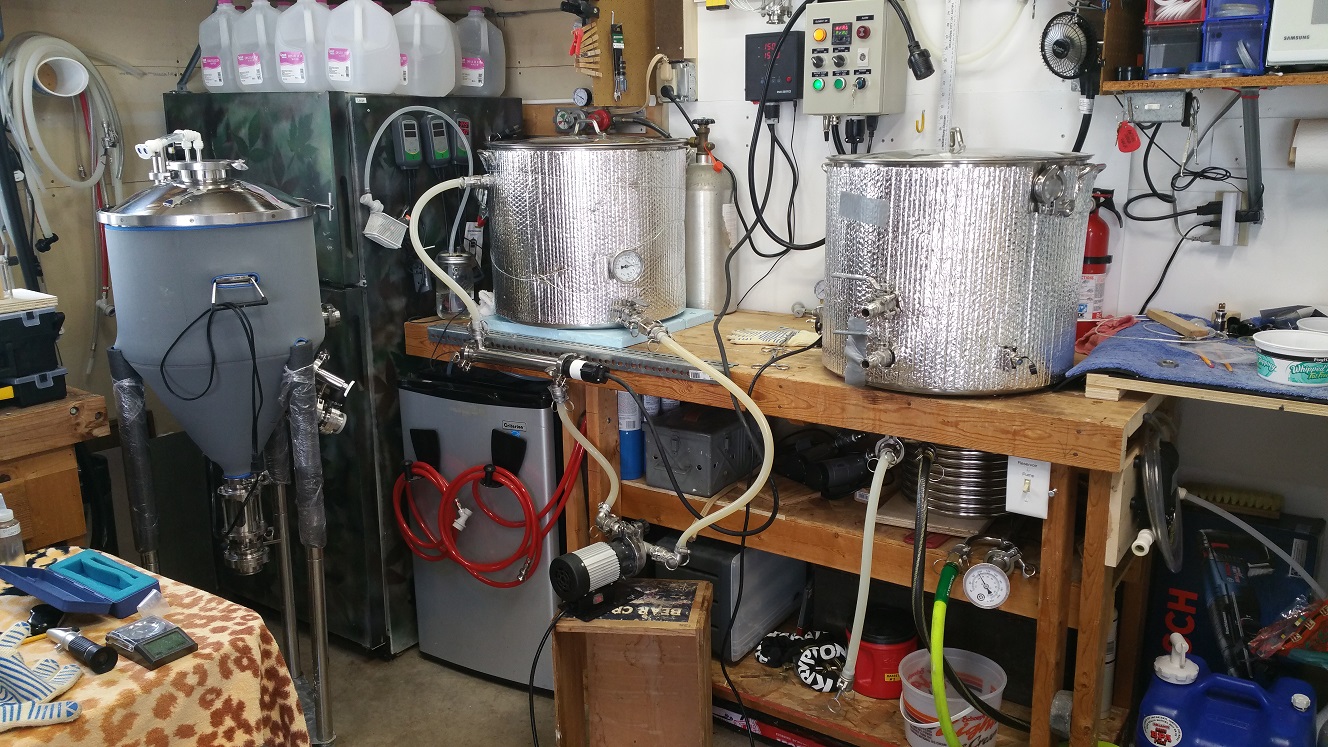I tested my new eBIAB system in about 6.5 gallons of water.
The setup is as follows:
15 Gallon Blichmann Boilermaker kettle; no insulation
4500 Watt 240v CoilCoil heating element
Auber Cube with EzBoil DSPR320
For now I just clipped the temp probe to the side of the kettle so the tip hangs in the water.
With the lid on the kettle, it took only 15 minutes to get from 66 degrees to 152. Ambient temperature was 66.
When I took off the lid and went to boil from 152 using 100% power, the temperature quickly rose to the upper 190s in about 10 minutes but then stalled around 203/204, and it took another 15 minutes to get from the low 200s to a boil. Calculators tell me I should get to boil from 152 in 12 minutes for 6.5 gallons. Could something be wrong with my set up? I verified that the EzBoil was delivering 100% power during the ramp and that the next step was set for 100% also.
The setup is as follows:
15 Gallon Blichmann Boilermaker kettle; no insulation
4500 Watt 240v CoilCoil heating element
Auber Cube with EzBoil DSPR320
For now I just clipped the temp probe to the side of the kettle so the tip hangs in the water.
With the lid on the kettle, it took only 15 minutes to get from 66 degrees to 152. Ambient temperature was 66.
When I took off the lid and went to boil from 152 using 100% power, the temperature quickly rose to the upper 190s in about 10 minutes but then stalled around 203/204, and it took another 15 minutes to get from the low 200s to a boil. Calculators tell me I should get to boil from 152 in 12 minutes for 6.5 gallons. Could something be wrong with my set up? I verified that the EzBoil was delivering 100% power during the ramp and that the next step was set for 100% also.



